Emiko Davies's Blog
August 1, 2025
My new cookbook, The Japanese Pantry, and where to celebrate with me
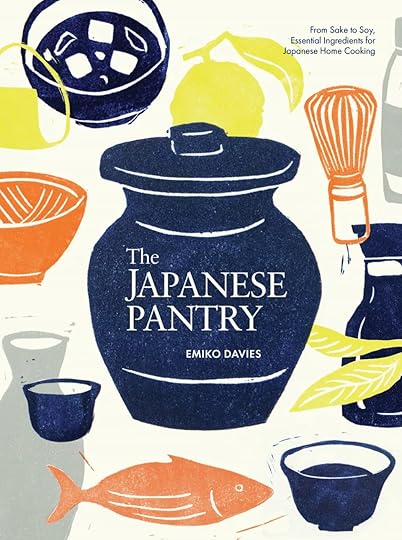
The Japanese Pantry is my seventh cookbook! It is officially out this October 28, 2025.
This is a book that I hope will inspire people to make the most of powerful pantry ingredients and feel confident in recreating Japanese flavours at home that are inherently simple and full of flavour.
After writing Gohan, one of the things I was asked most often about was the ingredients — what to buy, how to look for them, where to get them, possible substitutions, and whether you need many special ingredients to cook Japanese food.
My vision is for home cooks to see Japanese home cooking as approachable and as accessible as they do Italian food: something easy to whip up, family friendly, economical, nourishing and comforting. Some of the recipes I’m particularly excited about are the sesame “tofu” (just 3 ingredients and 10 minutes), the “refreshing” chicken in the vinegar chapter, the takikomigohan, the umeboshi chicken (4 ingredients!), and hoto noodle hot pot, which is the most comforting, warming dish and happens to be vegan.
It has been such an honour to be able to write another book about Japanese home cooking with Smith Street Books, with the support of Hannah Koelmeyer and her wonderful team, my team of recipe testers and the help of the talented Yuki Sugiura, who contributed to some of the photographs.
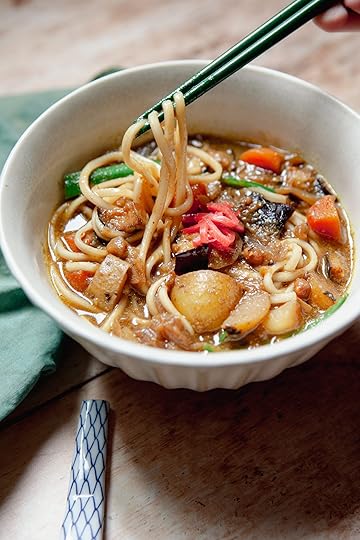
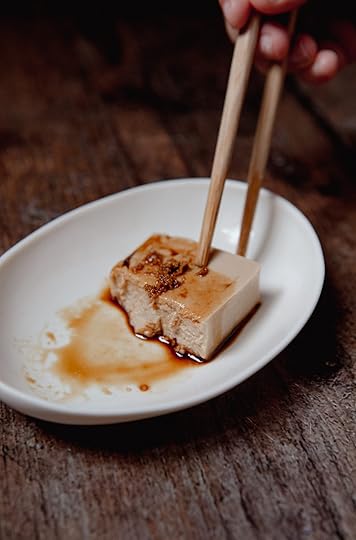
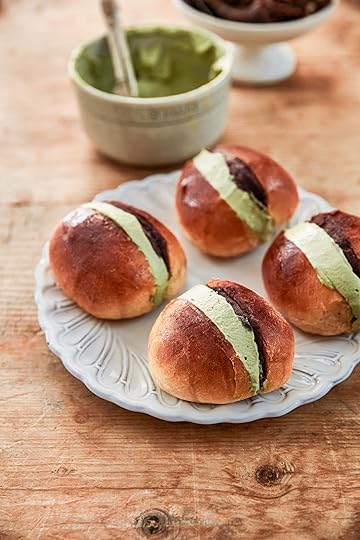
Book Tours
I have a book tour lined up for the UK in late October, including a cooking class at Divertimenti and book signings, so keep your eye on my workshops page for that.
It’s been nearly two years since the last time I was in Australia, but I’m here in August for a short time and will be doing a few events to give you a quick preview of my upcoming cookbook! Books will be for sale (nearly 3 months early)! So please do come and say hello.
SYDNEY
Saturday, August 16th, 6-9pm
Ok this one isn’t for the The Japanese Pantry but it’s the only cooking class I will be giving. It’s a Sydney Seafood School Masterclass and we will be cooking from my Venetian cookbook, Cinnamon & Salt! On the menu will be risotto con le seppie (Venice’s famous cuttlefish risotto), baked scallops with mushrooms and fennel gratin. Tickets are $200, you can book right here.
Sunday, August 17th, 11am-1pm
Join me in this intimate Food & Words event, where we go shopping for Japanese ingredients in Crows Nest, Sydney’s “Japan town.” We’ll visit a Japanese grocery store and I’ll talk about the ingredients that inspired the cookbook and also point out some particularly special ingredients to super-charge your dishes with, like barrel-aged soy sauce. You’ll learn how to shop for Japanese ingredients and what you can do with them. Plenty of time for questions as this is a really small, intimate group. We’ll finish with a bowl of Sydney’s best ramen on tatami mats, just like in Japan. Tickets available soon.
Optional signed copy of The Japanese Pantry can be included.
Saturday August 23rd 2025
Breakfast or Morning Tea from The Japanese Pantry at The Pantry, Flour and Stone 53 Riley Street, Woolloomooloo. Choose from the following options:
1) Breakfast (9.00am – 10.30am) of Kissaten fried eggs with toasted Shokupan, Cabbage and Soy and Ricotta & Sake Lees Cheesecake
2) Morning Tea (11am – 12.30am) of Hojicha Cream Sponge Roll or Matcha Maritozzi
Tickets here: $105, includes breakfast or morning tea, Q&A and a signed copy of The Japanese Pantry.
If you can’t make the morning sessions, you can also just pop in to Flour and Stone to collect a signed book on the day ($55) and visit for counter treats from The Japanese Pantry on the day. Until sold out: Hojicha Cream Sponge Roll, Walnut Miso cookies, Ricotta, Sake Lees Cheesecake, Matcha Maritozzi, Black Sesame Chiffon Cake
CANBERRA
Thursday, August 14
Book launch at Bison Home, Piallago. Taste some nibbles from the book, prepared by Emiko, sit in on an informal Q&A with Emiko and Brian from Bison — there will be some limited copies of The Japanese Pantry available too! More information coming soon.
Thursday, August 21
Book chat at Cook&Co, Kingston. Meet Emiko, who will be in conversation with Emma Bickley. Get a personalised, signed copy of The Japanese Pantry. Special packs including the book and Emiko’s favourite ingredients will be available to purchase too! Tickets $10, coming soon.
MELBOURNE
TBA!
Where to pre-order the book:
UK/EU: 30 Oct 2025 | GBP £30 | Amazon, Bookshop.org UK
AUS/NZ: 04 Nov 2025 | AUD $55| Amazon, Booktopia, Readings, YourBookstore
US/CAN: 28 Oct 2025 | USD $40, CAN $55 | Amazon, Bookshop.org US, Rizzoli
But please consider the best place to order and purchase books is from your local independent book seller — they can pre-order books for you too!
The post My new cookbook, The Japanese Pantry, and where to celebrate with me first appeared on Emiko Davies.
July 8, 2025
My first Japanese culinary workshop, December 5-10 2025
Culinary Japan: Discovering the food traditions of the mountain villages of Nagano with Emiko Davies
I’m so pleased to announced that after years of requests, I am finally ready to offer my first Japanese culinary workshop.
I have chosen Nagano, a place where I keep returning to again and again, first to visit friends who live here, then to explore and collect recipes and stories for my two Japanese cookbooks. It is a place I feel an affinity with, perhaps because it reminds me of my chosen home town of San Miniato — a small village with lots of wonderful producers and traditions.
We will meet in Tokyo, where hopefully you will have had some time to spend exploring. From there we take the train to Chino, Nagano, to start our culinary adventures. At the foothills of some of Nagano’s most famous mountains and only 2 hours on the train from Tokyo, we will spend 5 nights, 6 days, here cooking, eating and discovering the local traditions of this mountainous, forested, land-locked region.
While we will stay in the same area, we will move accommodation to give you a true, authentic experience. We will be in a pampering hot spring ryokan the first two nights, we will have a local homestay and we will also be in a series of shared homes of stunningly restored farmhouses the last two nights.
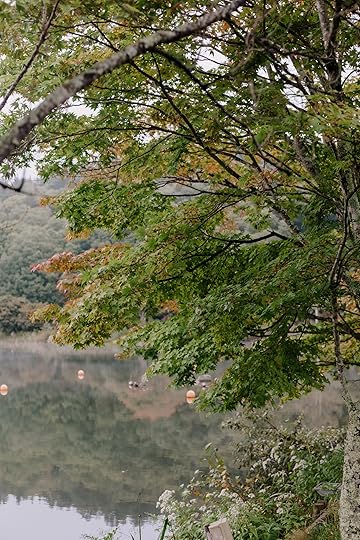
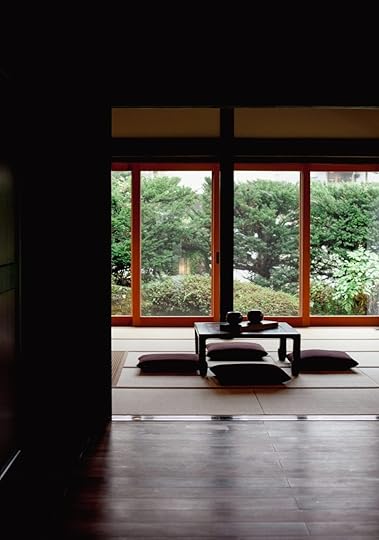
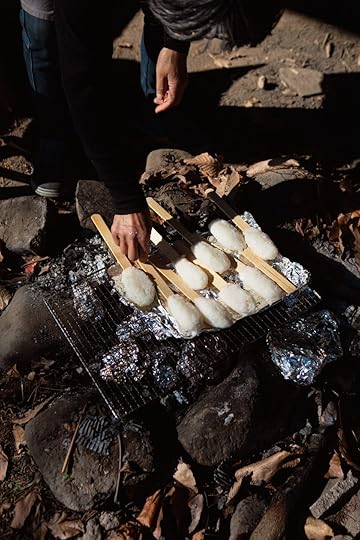
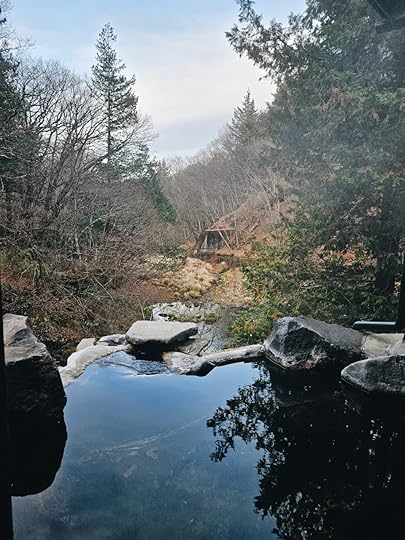
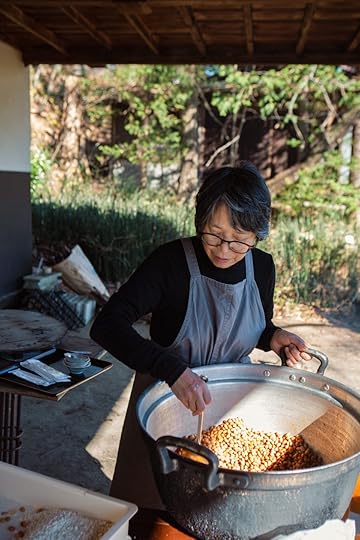
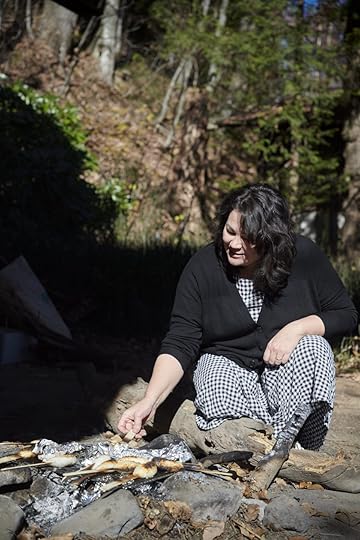
What: 6 days, 5 nights culinary workshop
Where: Starting and ending in Tokyo, we will be based in Nagano.
When: December 5-10, 2025
Who: Join cookbook author Emiko Davies on this food-focussed trip. This is for anyone interested in delving into Japanese food traditions, seasoned travelers, first timers, the only requisite is curiosity!
The itinerary:
Day 1, December 5:
We will meet at Shinjuku station and take the train (a 2 hour ride) to Chino, where we will head straight to a lovely cafe for a seasonal lunch. We will then take a walking tour of Sasahara village before we drive up the mountain to our ryokan for the night, the stunning Shinyu Tateshina Onsen, where we will be treated to the natural hot springs (they also have private bathing facilities) and an exquisite dinner.
Day 2, December 6:
This morning we will head to Sasahara village to cook with the local grannies. After lunch, we visit a Kanten producer and you will learn why this mountain landscape with its cold winters and fresh spring water is so suited to creating Kanten jelly from seaweed. We head back to our ryokan for a relaxing evening and dinner.
Day 3, December 7:
This morning we visit a tofu maker and make our very own fresh tofu together. We will then do a cooking class with Emiko, learning to make oyaki (fried dumplings), a speciality of Nagano. Tonight we will have a rural village homestay with locals, which includes dinner and breakfast (cooked with the host).
Day 4, December 8:
After breakfast, your homestay host will take you to Kamosuya, where we will meet for a miso making experience and lunch around a bonfire. After lunch, we head to Yamaura stay, a series of beautifully restored traditional Japanese farmhouses. We will have a bento dinner catered to us that evening in our home away from home.
Day 5, December 9:
After breakfast, we will visit the Togariishi Museum of Jomon Archaeology, where we will have a tour of the museum and then an outdoor Jomon food experience to better understand this hunter-gatherer culture of the ancient Japanese (14,000-300 BC). We then return to Yamaura stay for a relaxing afternoon and dinner.
Day 6, December 10:
After breakfast, we have a soba dumpling workshop (buckwheat dumplings called soba gaki). These dumplings are obtained by adding water to the flour and quickly stirring over low heat, a beloved home style dish that allows you to fully enjoy the flavour of the buckwheat flour. After a light lunch, we say goodbye to Nagano and return to Tokyo on the train.
Included in this 6 day, 5 night trip:
Accommodation for 5 nights, including two nights in an onsen with natural hot springs, a village homestay and two nights in the beautifully restored farmhouses of Yamura StayAll meals during the workshop, including at local eateriesDaily cooking classes (5 in total), including a miso making classVisits to a kanten and tofu producerVisit to the Togariishi Museum of Jomon ArchaeologyWalking tour of Sasahara villageTrain fare to and from TokyoThere is a maximum of 14 spots. I have also prepared a travel guide for guests who intend on traveling further or extending their trip in Tokyo (but see the bottom of the post for my articles on Tokyo addresses for some more ideas).
Cost: 521,270 JPY per person (tax is included; roughly 3,000 euro or 5,500 AUD)
Book now / see here for more details!
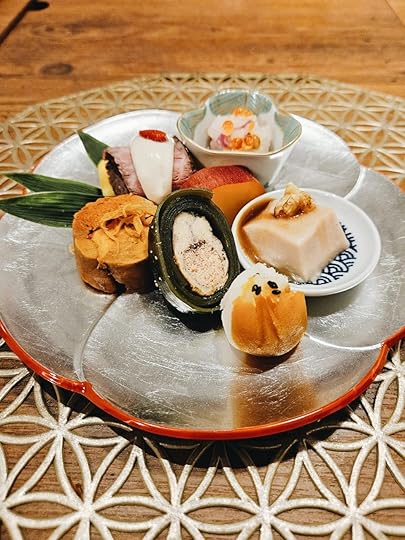
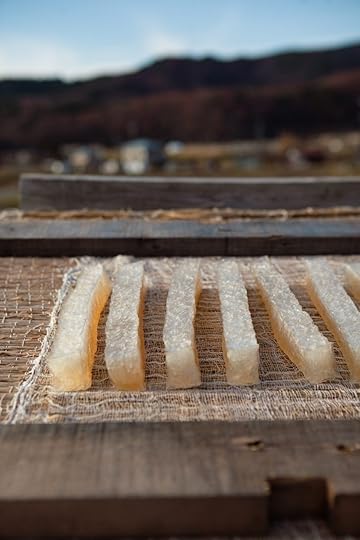
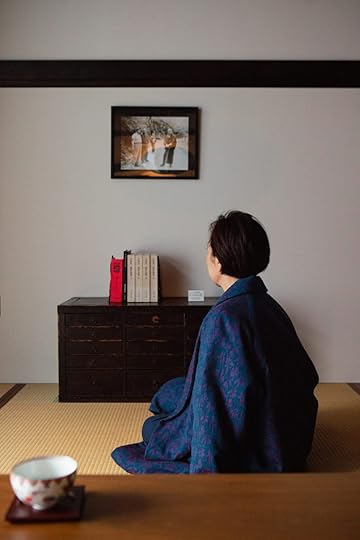
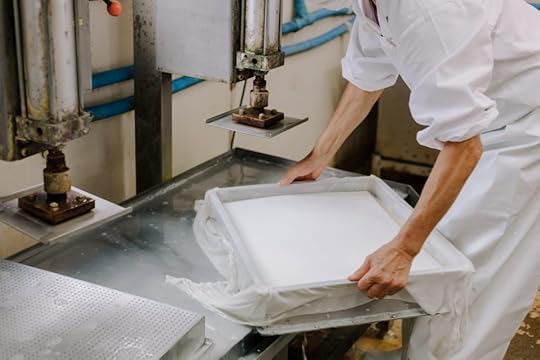
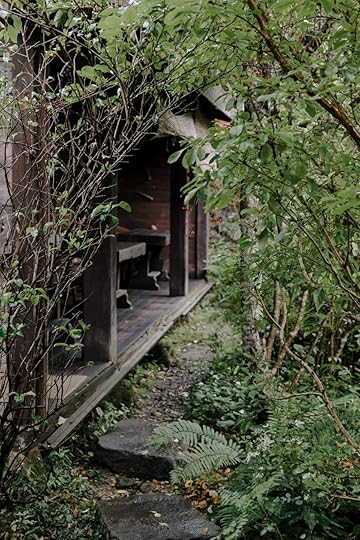
For some tips on Tokyo, please also take a look at these posts:
Kappabashi street for all your kitchen needs
Also check out Wabunka for some beautiful experiences in Tokyo or other Japanese cities, like a kintsugi workshop, tea ceremony or wagashi making workshop (note, I do make a small commission on bookings through their website, though not at any cost to you).
To get excited about this trip, I also highly recommend reading Lost Japan by Alex Kerr, who restored the farmhouses we will stay in on our last two nights, Yamaura Stay. He originally wrote this book in 1993 (in Japanese!), a sort of memoir that begins with how he stumbled across and restored a 300 year old thatched roof house in the Iya Valley and how much Japan has changed over those decades. It is still in print and it is one of the most beautiful books about Japan I have ever read.
The post My first Japanese culinary workshop, December 5-10 2025 first appeared on Emiko Davies.
April 4, 2025
A Mini Slow Living Retreat in Vieste, Puglia

I’ve been invited to this little corner of paradise, Cala Molinella, not far from Vieste, Puglia, from June 12-15, 2025 to make bread and I’d suggest you come too. This is my third time back here in this wonderful place.
The Gargano is a wonderful little Pugliese jewel, an off the beaten path part of the heel of the Italian boot, partly because of its isolation, which is thanks to the vast and ancient Foresta Umbra that you have to cross to reach the pretty, white-washed town of Vieste. The beaches of fine sand have crystal clear water, not too many people and dotted along the coastlien you can find the wooden trabucchi (an old and intricate fishing system that was used for hundreds of years until around the 1980s). It feels almost like an island in the way that its accessibility is limited to cars willing to drive over the small, hilly roads that hug the coastline or cut through the forest directly. Here, less than 10 minutes from Vieste, you can find Cala Molinella.
Once you’re in the Gargano Peninsula you are rewarded with stunning beaches, beautifully conserved traditions and a real, slow life of dolce far niente.

This is a very different workshop from my usual ones because I am just there to bake bread for the Sant’Antonio festival, then the rest of the time, like you, I’ll just be enjoying the simple, traditional Pugliese life!
If you are in need of a reset, a few days away from the world, nestled in simplicity, where you can have time to rest, to immerse yourself in some gentle activities — strolling through the white-washed laneways of Vieste, listening to Pugliese folk songs in the evening in the olive grove around the pool, getting your hands sticky with dough as we make bread for the Sant’Antonio festival in Vieste (fireworks, music, markets, processions), and foraging herbs and mulberries, perhaps a bit of star gazing, then this is for you.
Slow Living Puglia Retreat
12-15 June, 2025
The itinerary:
Day 1: 3pm Arrival at Cala Molinella and check in. Once you’re settled in your rooms and had some time to enjoy the grounds, at 5pm I’ll be hosting a cooking class where we will bake focaccia and bread rolls together. That evening, there’s a welcome aperitivo in Pugliese style around the olive trees.
Day 2: This day, June 13, is the Festa di Sant’Antonio, a special holiday in Vieste. The whole town celebrates for days! On this particular day we will visit Vieste in the morning for a walking tour of the old town, we will see the Sant’Antonio procession and have an exclusive look at the blessing of the bread for the festival, before relaxing with a panoramic aperitivo in the old town. You’ll have plenty of time then to relax by the beach or the pool and around 6pm we will meet up again for some foraging. At 8pm, there is a traditional Pugliese dinner among the olive trees with local folk music.
Day 3: After a Slow Breakfast, pool side or under the olive trees, we will visit Cala Molinella’s centuries old olive grove and have an olive oil tasting. You have then free time for “Dolce Far Niente” by the pool or the beach. At 8:30pm, we’ll have an outdoor movie screening of Eat Pray Love.
Day 4: After breakfast and check out at 9am, we will head to an organic Masseria (farmhouse) in the Gargano National Park for lunch before saying our goodbyes.

Why Sant’Antonio:
Sant’Antonio (Saint Anthony) di Padova is celebrated around Italy in various places on June 13th, but the one in Vieste is special. The bakeries close that day because they’ve been up all night baking bread to be blessed for this day and there’s a cavernous garage next to the church of San Francesco (home to the precious statue of Sant’Anotonio) that is filled with the town’s bread supply. It’s a round bread loaf, seemingly ordinary, but rather than keep it to yourself, this bread loaf is shared by tearing off small pieces and giving them to your friends, family and neighbours. It’s an act of conviviality and sharing what you’ve got and although I am not religious, this is something that I can really appreciate.
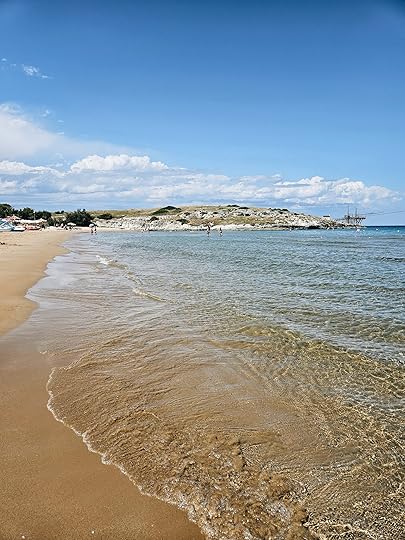
The place:
Cala Molinella is a sustainable, friendly, family-run resort full of heart near the pretty, protected bay of the same name. With a beautiful central “piazza” filled with olive trees, fruit trees, a stunning pool, a bar and a repurposed boat as a children’s playground, it is a family friendly atmosphere with many lovely outdoor spaces to relax in. They have their own vegetable patch, chickens and even donkeys. Rather than rooms, the resort offers cottages that are very simple but absolutely clean and comfortable (there is air conditioning!) with a kitchenette included. There’s a little fruit and vegetable truck that comes around in the mornings with the most incredible array of fresh Pugliese produce to entice you or you can order traditional Pugliese meals from their small kitchen to takeaway to enjoy under the olive trees or in your rooms.
To me, it is a little slice of paradise exactly for this refreshing simplicity, which I personally feel is nostalgic! It is just the place to switch off and relax in.
The nearby beach is easy to get to on foot (350 meters away) or with a quick ride on the Cala Molinella golf buggy. There, you can relax by the calm, shallow waters with a view of Vieste and one of the few remaining Trabucchi — old fishing vessels that cling to the cliffs — this one was carefully restored by the family of Cala Molinella and you can still visit it, with a demonstration of how they once worked and aperitivo. There is a beach bar for snacks and light lunches and even showers. Your lounge chair and umbrella comes with the package. On the beach, you’ll find Italians doing their best job at dolce far niente, playing cards or bocce (petanque) until sunset, it’s a very relaxed vibe, and this time of the year is still surprisingly quiet.
If this sounds *too* slow for you, then you can also use the free time perhaps to visit the Foresta Umbra or rent a bike and ride around the coastline. Maybe go for a wine tasting at the nearby natural wine cantina Vini Elda, or perhaps hire a boat to take you around the coast. Antonella at Cala Molinella can arrange all of these for you. If you have a car, you may like to visit the nearby town of Peschici and the Trabucco da Mimi for an unforgettable meal.
Cost: 550 euro per person
Price includes:
3 nights stay (one is complimentary)Private parkingSunbeds and umbrella at the private beach clubActivities mentioned above1 breakfast, 1 lunch and 1 dinnerThere are options for a studio cottage (1-2 guests), one bedroom cottages (2-3 guests) or two bedroom cottages (2-5 guests).To book, email Antonella at info@calamolinella.it
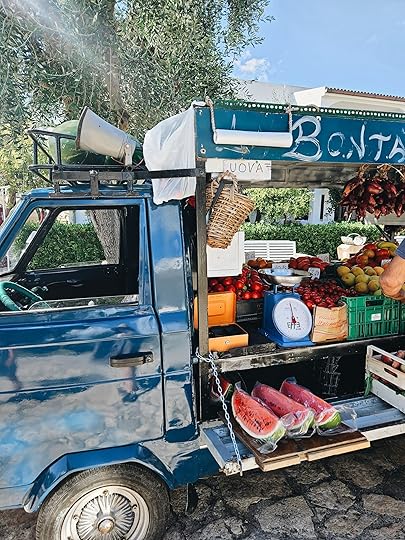
The post A Mini Slow Living Retreat in Vieste, Puglia first appeared on Emiko Davies.
March 14, 2025
Scribehound, a new place for food writing
I’m so thrilled to share that I’ve been asked to join the collective of thirty of the most incredible food writers for a new platform called Scribehound. It’s a place where we can share things we are excited about with people who really love food and words. The comments section is where it is all going to be at, you can contribute to the discussion too, together with all of us.
We like to say it’s going to be like “the internet’s kitchen table!”
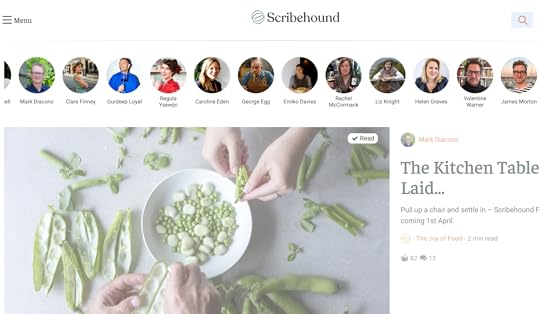
How does it work?
How it works is we will each write one article a month, giving subscribers access to a piece of food writing every single day. There are 6 occasions when there are 31 days in the month and those are open to upcoming new voices to be a community writer (is that you? ). We also record our own articles so if you prefer to listen in, like a mini-podcast (10 minutes-ish), while you’re preparing breakfast or dinner or in the car, there is always that option too!
Who will you be reading?
At the helm are ex-Delicious UK editor Karen Barnes and Mark Diacono. You’ll find Diana Henry, Fuchsia Dunlop, Olia Hercules, Anissa Helou, Georgina Hayden, Skye McAlpine, Regula Ysewijn, Claire Finney, Bee Wilson, Gurdeep Loyal, Noor Murad, Angela Hartnett, Ravinder Bhogal, Yemisi Aribisala, Itamar Srulovich, Marie Mitchell, Tim Hayward, George Egg, Niki Segnit, Helen Graves, Rachel McCormack, Liz Knight, Valentine Warner and James Morton.
What will you be reading about?
It will be less about sharing recipes. This is really for food writing. As you’ll see from the list above, there is such a huge variety of writers, backgrounds and topics that they specialise in/are obsessed with, so you are going to hear about food from so many different perspectives, everything from foraging for weeds, the secrets of sourdough, seasonal eating, Cypriot home cooking, historical recipes, food as resilience, Ukrainian traditions, the multitude of textures of Chinese cuisine, restaurants and how food, culture and politics intersect — and so much more. The beauty of this collective is that we aren’t overly edited and we can freely choose whatever we want to write about.
Me? I will be writing about living and eating in Tuscany, eating artichokes right out of the field, food in history, finding my connection with my heritage in Japan, truffle hunting during a time of climate change, feeding my children and trying to help them have a wonderful relationship with food.
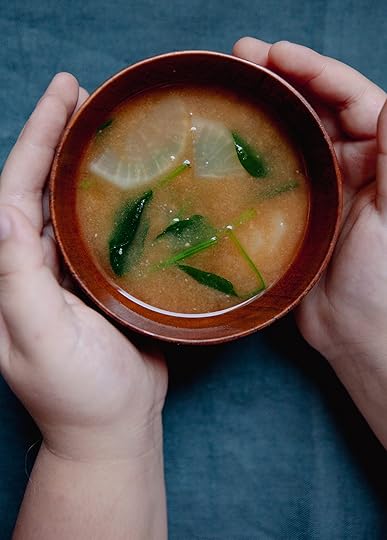
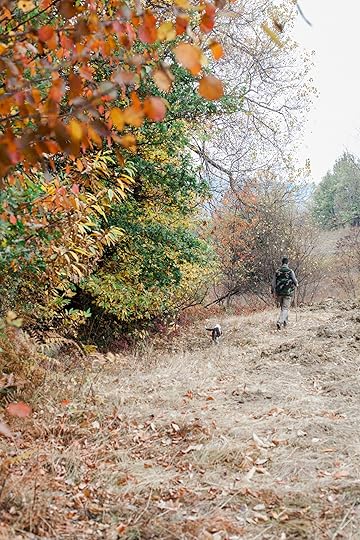
It launches April 1, 2025!
There is a special, pre-launch deal where you can try us out for £1 for the first month (and you can cancel anytime; note, I will make a small commission if you sign up thanks to me but it won’t affect you in any way).
My first article is a story about a young Florentine merchant who travels to Japan in 1597. He’s the first person to write about miso making and what the Japanese cultivate, how they revere tea and how they make and serve sake. We don’t hear about these things for another 300 years. I loved that this story is a blend of the two places that have the greatest influence on me, food-wise.
If you want to take a look, find out more here.
The post Scribehound, a new place for food writing first appeared on Emiko Davies.
January 3, 2025
Mele al forno, baked apples and The Tuscan Year
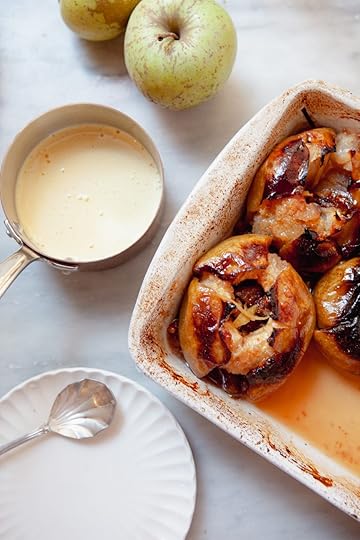
This simple dish is one of my favourite autumn or winter desserts. It’s just perfect after a long lunch with friends, for example, as you can and should (technically speaking it makes things much easier) make many of these at once. After all, you just put all the apples in a baking tray together.
I included this recipe in my family cookbook, Tortellini at Midnight, because it is one of the dishes that my Tuscan mother in law likes to make for the November 1st holiday, tutti i morti or Ognissanti or All Saints or however else you like to call this sombre holiday where the ancestors graves are visited, cleaned and honoured. It is also when new apples are in season.
It’s the kind of dish I love because it takes so little time to make, you just put it in the oven (which in turn warms up the kitchen) and because you can keep it as essential and simple as you like or you can jazz it up in so many ways.
Recently I was reading Elizabeth Romer’s wonderful book, The Tuscan Year, which was originally printed in 1984 (if you don’t know it, if you’re a fan of Elizabeth David or just generally interested in a Tuscan family’s farm life, you will love this) and noticed she had this recipe included in here too — it’s written in chapters according to the months of the year and it’s in her November chapter. She hoped that her book — an account of her neighbours, the Cerrotti family’s farming lifestyle in a valley near Cortona — would be particularly interesting for those reading it a century later, but I think things have changed so much that it has only taken 40 years for this to be a fascinating read of lost traditions.
The book is particularly about Silvana Cerrotti, a farmer in her forties, who you can tell is the true boss. Romer carefully describes what Silvana is cooking for her family and her workers — twenty strong — but also how she dresses and what she likes to do when she’s not busy cooking. In January, surrounded by snow, she makes prosciutto, salame and sanguinaccio — blood sausage. In February, we follow Silvana as she goes searching for wild salad to forage in the fields, while her husband Orland plants his precious tabacco plants (at one time this was the major income for many Tuscan farmers). March is the time that Silvana, an excellent cheesemaker, finally starts her pecorino cheese, made with the milk of their flock of sheep and old wild artichoke plants that have dried. People come from all over to buy it.
It’s not only a collection of recipes, but an account of a way of life that has practically disappeared. Silvana loves foraging mushrooms, which she does from the end of the summer through the early autumn and, as she is efficient and multi-tasking, she brings with her also wool (from her own sheep of course) and she spins it as she looks for mushrooms; or sometimes she brings the already spun wool and her knitting needles so she can make a pair of socks as she walks through the woods, head down.
There is always something going on the stove, as she cooks for the whole team of farm workers but in November, in particular, when things calm down on the farm, she has more time to prepare desserts. She makes ciambellone, chestnut cakes, crostata and baked apples.
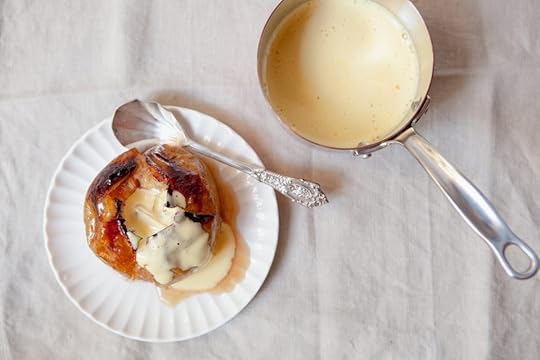
For the apples, Silvana’s version is simple, with some lemon and sugar over the top, a bit of butter and a splash of water. She serves them with zabaione — a whipped custard made of just egg yolks and sugar — which she placed in her best glasses. For Silvana, it’s more a tonic than a dessert.
I like these apples stuffed with walnuts and sultanas, which I re-hydrate in some white wine or water before baking. You could use dried figs too. Or any nut you like — hazelnuts and pine nuts are great. You can soak the sultanas in grappa or rum if you like. And if you can’t be bothered making the zabaione, just serve it with some vanilla ice cream or a bit of whipped cream. They’re delicious warm but I also love eating the extra apples I’ve made the next day cold with some thick Greek yogurt for breakfast.
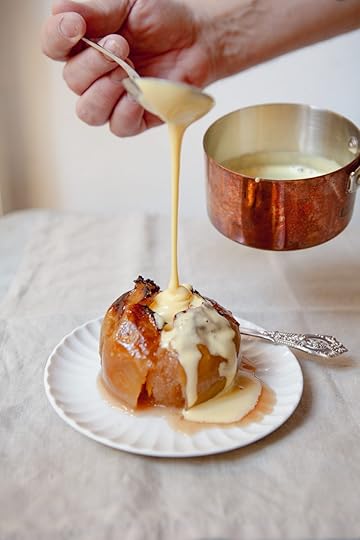
An important thing is that you need to pack the apples in snuggly so use a baking dish of the appropriate size so there’s no room around them. They tend to expand and break open as they bake so packing them in like this helps keep their shape. Or just add an extra apple or two if you need — why not?
I like to choose smallish local apples for this and I keep the skins on, but there is nothing stopping you from peeling them if you prefer. Use any favourite apple — generally I’d go with an apple that’s a good one for cooking.
Mele al forno, baked Tuscan apples
6 apples, rinsed and skins onHandful of walnutsHandful of sultanas, soaked in water (or grappa!)6 teaspoons sugar (brown or white)50 grams butter, cut into small chunksLemon juice and zest, if you like150 ml of water (or white wine)Remove the core from each apple without cutting open the apple — to do this without an apple corer, use a small sharp knife and cut a hexagon around the core from the top of the apple, then flip it over and do the same from the bottom then push it out with your finger.
Place the apples in your chosen tray, tightly together, and fill the holes with some pieces of walnut and the drained sultanas and a teaspoon of sugar over each. Top each apple with a piece of butter or dot some around the tray. Squeeze a bit of lemon over the tops (and since you have a lemon, grate some of the zest over too). Finally, pour the liquid into the tray too. Bake for about 30 minutes at 180°C or until the apples are soft and look like they’re exploding — they will sort of burst out of their skins. Baste them with the wonderful sauce that is surrounding them and serve them also with a dribble of this sauce and, if you like, some zabaione or ice cream.
For the zabaione:
3 egg yolks3 teaspoons sugar60 ml (1/4 cup) of vin santo, or sherry or similar, optionalYou can leave out the dessert wine entirely and make it just simply out of egg and sugar too. Simply whisk the ingredients together in a heatproof bowl until fluffy — Silvana serves it just like this. But you can thicken it and pasturise it (which is how we make it) by placing the bowl over a small saucepan of very gently boiling water for a bain marie and continuing whisking until pale, thick and very fluffy. It should take a matter of minutes.
The post Mele al forno, baked apples and The Tuscan Year first appeared on Emiko Davies.
August 25, 2024
All my recipes in one place
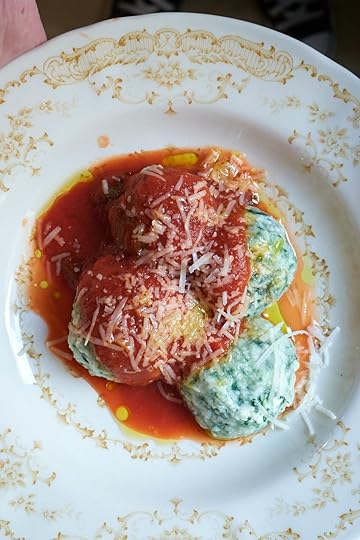
A full recipe index of my recipes over the past 14 years
I will update this as I can, and possibly, when I find the time, I might add the 200 recipes from my old Regional Italian Food column at Food 52 as well.
On measurements
I use metric weight rather than volume in my recipes as I find it more accurate and, personally, more convenient. If you rely on cups, please note that Australian, British and US cups and tablespoons all have slightly different measurements – how confusing! Where there are cup measurements, I use a 250ml cup measurement a 20ml tablespoon (so, for example, if you’re using US tablespoons which are 15ml, be generous). If you need to convert these measurements, just starting typing the conversion into google and you’ll find the answer! If in doubt, weight is always the most accurate.
Shortcuts (these will take you to the recipes tagged under these themes for a browse)
Vegetarian
Pasta
Baking
Tuscany
Pizza
Kids in the kitchen
Essentials
Brodo di pollo o cappone (chicken or capon broth)Brodo di carne (beef stock)Broad bean pestoCitron syrup (or indeed any citrus syrup)Crema Inglese (creme anglais, or pouring custard)MascarponePomarola (homemade salsa di pomodoro)Raw tomato sauce for hot summer daysRicottaSala Verde (parsley sauce to put on everything)SoffrittoAntipasti e Merende ~ Starters and snacks
Bread cake with goat’s curd, pumpkin and prunesBruschettaCinnamon fritters with stale breadCrostini di Fegatini (Tuscan chicken liver pate crostini)Crostini con Baccelli (fava bean crostini)Crostini with cannellini beans and marinated white anchoviesCrostone di Salsiccia e Stracchino (sausage and soft cheese crostone)Fiori di acacia fritti (fried robinia flowers)Frittelle di sammole (wild garlic fritters)Pane con pomodoro (bread with tomatoes)Panini di lampredotto (Florentine tripe sandwiches with salsa verde)Polenta crostini with mushroomsProsciutto and wilted greens crostoneRadicchio and walnut spreadSmoked tuna and artichoke paniniTorta di ceci (chickpea flatbread)Tortine di mozzarella (stale bread and mozzarella cakes)Handmade Bread, Pies, Pizza
Artichoke tartCherry Tomato SchiacciataDate, fig and walnut focacciaFocaccia PugliesePane all’olio (olive oil bread rolls)Pane alle olive (olive bread)Pizza with homemade mascarpone and speckPizza dough, Roman stylePizza (ancient grain, sourdough) with truffle, artichoke and anchoviesSchiacciata all’uva (Florentine grape bread)Schiacciatine (mini focaccias topped with good things)Torta Pasqualina (Ligurian Easter pie)Pasta
Agnolotti filled with pork and cabbageBucatini alla Reggina (Calabrian style bucatini with tomato, breadcrumbs and chilli)Casunziei (beet ravioli with poppyseed sauce)Egg yolk ravioliFarfalle con Pistacchi e Pancetta (fresh bowtie pasta with pistachio and pancetta)Lasagne di pane carasau con funghi e salsiccia (Mushroom and sausage lasagne with Sardinian flatbread)Maltagliati with rosemary, beans and pancetta“Olive leaf” pasta with tomato and mozzarellaOrecchiette con broccoliPaglia e fieno alla fiesolana (handmade green and gold pasta with peas and prosciutto)Pappardelle all’aretina (Arezzo style duck pappardelle)Pappardelle con ovoli e nepitella (pappardelle with Caesar mushrooms and calamint)Pappardelle con funghi Pasta con le sarde (pasta with sardines and fennel)Pasta e ceci (pasta with chickpeas)Pasta mista con patate e cozze (mixed short pasta with potatoes and mussels)Pasta verde all’ortica (Fresh nettle pasta)Pasta with mascarpone and walnutsPici all’aglione (pici with classic tomato and garlic sauce)Pici al sugo finto (handmade pici pasta with “fake sauce”, a vegetable sugo)Pici con le briciole (pici pasta with breadcrumbs)Ragu Bolognese di Zia Nerina (Aunt Nerina’s bolognese ragu)Ragu di coniglio (rabbit ragu for pasta)Ravioloni with braised pork cheekRicotta, feta, mint ravioliRicotta tortelliSpaghetti con agretti (spaghetti with monk’s beard)Spaghetti con le vongole, a guideSpiced walnut linguineSquid ink pastaSugo Burgiardo (sausage ragu)Tagliolini al Limone (tagliolini pasta with lemon sauce)Tortellini all’ortica (nettle tortellini)Crespelle, gnudi, gnocchi etc
Borage and ricotta crepesCarrot and ricotta gnudiChestnut gnocchi with walnut sauceChicken gnocchi in brothCrespelle verdi di pesce (spinach crepes with fish ragu)Gluten free gnocchettiGnocchi alla Romana (Roman style baked semolina gnocchi)Gnocchi di zucca e castagne (pumpkin and chestnut gnocchi)Gnudi di ricotta e spinaci (classic Tuscan gnudi with a video)Ricotta gnocchiSoup and Risotto
Acquacotta Viterbese (wild greens and bread soup with poached eggs)Biancomangiare (Renaissance chicken and almond milk soup)Brodetto di Pesce (Tuscan fish soup)Chicken and farro soupMinestronePappa al Pomodoro (Tuscan bread and tomato soup)Passata di zucchine e i fiori (zucchini and zucchini flower soup)Ribollita (Tuscan kale soup)Risotto con zucca gialla e zafferano (Pumpkin and saffron risotto)Risotto in Cantina (risotto with white wine)Risotto with pan-roasted quailsZuppa Corsa from Garibaldi Innamorato (Corsican fish soup with crostini)Zuppa di zucchine e i fiori (zucchini and zucchini flower soup)Zuppa Certosina (fish and egg drop soup from a Tuscan monastery)Zuppa di Moscardini (baby octopus soup)Zuppa di pesce (fish soup from Giglio island)Meat
Bistecca Fiorentina (Florentine steak)Bombette (Pugliese crumbed veal and cheese skewers)Braciole Rifatte (Tuscan crumbed veal in tomato sauce)Bracioline al Burro (Veal with butter)Braciuole nella scamerita (Pork neck with cavolo nero)Chicken and ricotta meatballs (and cooking one-handed)Cibreo (a forgotten historic Florentine dish)Cinghiale in dolce-forte (Wild boar in chocolate sauce, a recipe from Acquacotta)Coniglio alla cacciatora (Hunter’s stew with rabbit and olives)Coniglio fritto (Tuscan fried rabbit)Cotoletta Milanese (breaded veal chops)Guinea fowl stew (faraona all’aceto)Involtini di carne (Fabrizia’s Sicilian meat involtini)Polpette di Nonna Anna (Pugliese meatballs)Polpette di trippa (deep fried tripe balls)Pollo al burro (butter chicken)Pollo in Galantina (stuffed, deboned Tuscan style chicken)Salsicce con uva (sausages with grapes)Spiedini di carne (Tuscan sausage, chicken and bread skewers)Squab stuffed with sausage and fresh herbsTacchino Tonnato (turkey with tuna sauce)Triglie alla Livornese (Livorno style pan fried mullet with fresh tomato)Tuscan style meat skewers or Spiedini di carne alla toscana from Tortellini at MidnightEggs
Eggs and anchovies (uova strapazzate con acciughe)Fried eggs with spring trufflesFrittata di spaghettiFrittatine Trippate (frittata strips in tomato sauce)Uova al Pomodoro (eggs poached in tomato sauce)Uova al Pomodoro di Sarah Fioroni (Sarah Fioroni’s Uova al Pomodoro)Seafood
Cozze ripiene (stuffed mussels)Orata al cartoccio (Paper-baked sea bream)Pittea Tropeana (fresh sardine and bread cake from Tropea)Sarde a beccafico (baked sardines, Sicilian style)Slow-braised stuffed squid, a little Arabic influenceOstriche Tarantine in Tiella (Taranto style oysters)Oysters wrapped in lemon leavesPanzanella with vongolePolpette di tonno (deep fried tuna croquettes)Sarde in Saor (sweet and sour fried sardines)Vegetables and salads
Beans cooked in a Tuscan jarBean salad (favourite summer salad)Blood orange and fennel saladCaprese saladCarciofi in umido con la nepitella (braised artichokes with calamint)Carciofi ritti (stuffed stewed artichokes)Citron rind saladFagiolini sfiziosi (Pugliese green beans)Farro saladInsalata di carciofi (Raw artichoke salad)Insalata di cedro (citron rind salad)Insalata gigliese (a summery tomato and celery salad from Giglio island)Insalata di punterelle (punterelle/chichory shoot salad)Involtini di cavolo con patate e funghi (Cabbage involtini with potato and mushrooms)Panzanella di Bronzino (cucumber and bread salad, the original panzanella)Pomarola (Nonna Lina’s tomato sauce)Radicchio, four waysVerdure Primaverili (Fabrizia’s spring vegetable stew, a bit like vignaiola)Frozen desserts
Almond milk gelatoAmaretti Ice Cream SandwichesGelato di fior di latte al rosmarino (milk and rosemary gelato)Granita al melone e peperoncino (melon and chili granita)Semifreddo with cherriesSour cherry and cinnamon sorbetStracciatella al tartufo (truffle and dark chocolate gelato)Desserts
An egg for a child (like a zabaione)Apricot Jam CrostataBaked ApplesBerlingozzo cakeBiancomangiare (almond milk pudding)Black locust (Acacia) flower cakeBlood orange and rosemary cakeBomboloni (jam-filled donut balls)Buckwheat and jam cakeBudino di riso (baked rice pudding) Chocolate, almond and lemon torta from SicilyChocolate cake (eggless, butterless)Chocolate cake from Anna Tasca Lanza (flourless, effortless)Cinnamon bombolonciniCinnamon frittersColomba for EasterCrostata di marmellataCrostata di ricotta e pere coscia (ricotta and baby pear tart)Crostata di susine selvatiche (wild plum tart)Crostatine di ciligie (little cherry tarts)Elderflower fritters (a Renaissance recipe)Elizabeth David’s Chocolate CakeFig Frangipane TartFour ingredient birthday cake (happens to be gluten free and dairy free)Frittelle di Riso (rice fritters)Kaiserschmarren or Frittelle spezzate (broken pancakes)Little lemon polenta cakes (a favourite)Mandarin jellyMaritozzi (Roman buns with whipped cream)Mascarpone and blackberry chocolate tartMascarpone and blackberry cakeMascarpone and raspberry no-bake pandoro cakeMascarpone cream with fresh strawberry sauce Millefoglie (puff pastry and diplomat cream layered cake)Minne di Sant’Agata (Sicilian ricotta pastries)Necci (Tuscan chestnut flour crepes)Nocciolata sponge rollPandiramerino (rosemary and raisin buns)Panforte (spicy Sienese fruit and nut cake)Panforte with chestnut flour (gluten free and vegan)Panna cotta (the ultimate wobbly panna cotta)Pastiera Napoletana (Easter cake from Naples)Peach and amaretti tartPistachio, polenta and olive oil cakePolenta and poached pear cakePumpkin bread with Tuscan spicesRicotta, spelt and dark chocolate cakeRicotta al forno, the simplest baked ricotta cakeRobinia flower cakeRobinia flower frittersRose petal and ricotta tartletsSaffron and ricotta frosting for cakeSanguinaccio dolce (blood and chocolate pudding)Semolino pudding with loquatsSchiacciata di Pasqua (Tuscan Easter cake)Semolina cakeStrawberry TiramisuStuffed peachesSwiss roll with alchermes mascarpone cream and pistachioTiramisu, the classic wayTiramisu alla fragola (strawberry tiramisu)Tiramisu, with fig and ricottaTorrone sardo (Sardinian nougat)Torta alle nocciole (hazelnut and espresso cake)Torta di Cachi (persimmon cake)Torta Caprese (flourless chocolate and almond cake)Torta con i ciccioli (memories of an old cake with pork scratchings)Torta di mandorla (Nonna Vera’s simple almond cake)Torta Margherita (three-ingredient, gluten free sponge cake)Torta di Mele (apple cake)Torta di Noci (walnut cake with lemon buttercream, a truly divine cake)Torta di Pasta Frolla (pastry and jam tart)Torta di susine (plum and ricotta tart)Torta di Zucca Gialla (Artusi’s pumpkin pie)Tronco di natale (Christmas yule log)White pound cakeZabaione (see also An egg for a child)Pastries and cookies
Befanini (soft Tuscan children’s cookies)Biscotti di meliga (polenta cookies)Braided Fig and Walnut Pastries (treccia con fichi e noci)Cantuccini (Tuscan biscotti)Cavallucci cookiesCelli Ripieni (jam filled cookie dumplings)Chestnut flour and fig biscottiHazelnut, brown sugar and espresso biscottiLady fingers, homemade (savoiardi)Polenta and elderflower cookiesDrinks
AffogatoBelliniCaffe Leccese (coffee and almond milk from Lecce)Cedrello (Citron peel liqueur)Italian hot chocolateMarco’s Martini Rosso CocktailNocino (walnut liqueur)Spritz (and all about aperitivo)Preserves and the like
Acetosa di lamponi (raspberry vinegar)Apricot JamBitter orange marmaladeCherry jamCiliegie sotto spirito (boozy cherries)Fig HoneyGrape and fig leaf spoon sweetsGrape jamLemon marmaladeMelanzane sott’olio (Eggplant preserved in olive oil)Rose petal jamSaffron and ricotta frosting for a birthday cakeSaffron saltStrawberry Tree Jam (marmellata di corbezzoli)Sweet pastrySweet Tomato JamTropea onion jamWhite peach and basil jamWhite Truffle ButterOther things
Dyeing with turmericHomemade tofuHow to make chestnut polentaHow to make tomato paste in SicilyMaking prosciutto in San MiniatoWhat we are drinkingPhoto above of my ricotta and spinach gnudi by Julie Wilson-Haines.
The post All my recipes in one place first appeared on Emiko Davies.
August 5, 2024
How to eat and travel more sustainably in Florence
This is not the first time I have written about this subject, but it seems, year after year, that it is more and more important to keep talking about this. Florence sees record numbers each year and its popularity, in such a small town, means there is absolute chaos in the historical centre for a longer period of the year — it is not just July and August that see the most tourists, but now, because of the increasingly common extreme heat over the summer months in Tuscany, you’ll see crowds from Easter through to October. So if you’re planning on visiting Florence at really any time of the year, do have a read.
I originally published a How to Travel More Sustainably to Florence piece on my Substack newsletter in August 2023 after this Instagram post about the crushing crowds of a certain panino shop went viral. I have now unlocked the paywall on this piece to be able to share it more widely, as well as sharing the points below (and so many links and suggestions!). But this new post was inspired by an article I wrote for Corriere della Sera (in Italian, see here for the explanation in English on my newsletter) about a wonderful restaurant in Florence that is closing this week and the conversation about the Florentine dining scene and overtourism that that closure has brought about.
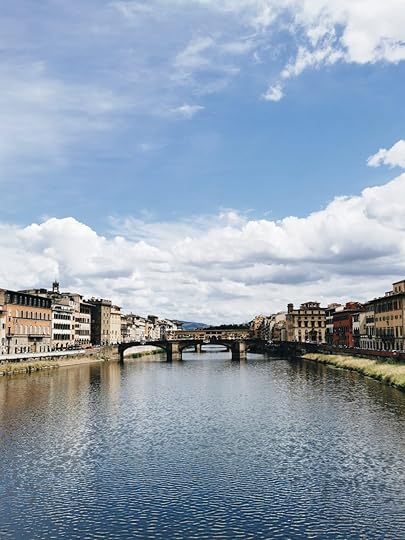
First of all, what does it mean to travel sustainably? There are layers to what this but I think this quote from this National Geographic piece, sums it up quite well:
“Sustainable travel is about traveling in a way that’s sensitive to the climate and nature emergencies while ensuring that the wellbeing of the places we visit gain long-term benefit from us traveling there. It’s a balancing act between maximizing the positives of travel while reducing or eliminating the negatives.”
Here are my suggestions:
Don’t add yourself to a long queue
Florentines don’t have the patience to queue, they wouldn’t queue. If you see a line, it’s definitely just tourists. Don’t you want to use your time in Florence in a better way other than spending it in queues (already so many for the museums!)? Forget the lines — there is always another option. Gelaterie and panini are all over Florence (both are historically very Florentine things, not just made popular by social media! There are plenty of good choices, do not think you need to line up just for one “special” place). And please, don’t queue up for that panino, here are 11 other wonderful panini places that are better, more special and more uniquely Florentine.
Visit the quieter museums
Florence is full of incomparable museums, many of them are actually really pretty quiet. I once worked as a tour guide in Florence for 5 years and have visited them all multiple times over the years. While the Uffizi and the Accademia are extremely crowded, I think these are incredible and less crowded (in some cases empty!):
The Bargello: Go for the Michelangelos and Cellinis in particular, but also Donatello and the medieval architecture.
Palazzo Davanzati is also a really unique museum I love, especially as a medieval “home” (the frescoes! And don’t miss the kitchen upstairs!)
La Specola — the Medici family’s collection of wax anatomical sculptures and taxidermy is fascinating, if a little macabre (the kids actually love this one) and it has recently had a huge renovation done to it.
Palazzo Strozzi is one of the extremely few museums that have also contemporary exhibitions and is set up for children and young people visiting. But also, in Florence not everything has to be a museum: my favourite paintings in the city are the Pontormo Deposition inside the little Santa Felicità church and the Ghirlandaio frescoes in the Santa Trinità church, both of which you can just walk into, no queues, no fees.
Also take note that in busy seasons, many Florentine museums have evening openings and most tourists don’t realise this! The Accademia Gallery, for example, is open Tuesdays until 10pm and Thursdays until 9pm from 4 June-24 September, 2024.

Eat and explore also outside of Florence
This means leave the old walls of the historical centre and explore other neighbourhoods of the city, which are easy to reach by tram or bus, but also why not go right out of the city and visit another place? Here are just a handful of ideas:
Soffiano is an outer neighbourhood on the western side of Florence, easily reached on the tram along Viale Talenti. Here you can find one of my favourite pastry shops, Giorgio, which is also a good spot for aperitivo and next door Alla Corte dei Tre, which is just a cute, quiet neighbourhood pizza place. I also love Oko Bento, a Japanese bento place run by two Japanese mammas, just outside of the San Frediano gateway. It is mainly for takeaway but there are a couple of chairs too. They sell out quickly so get there on the early side. If you miss out, Bistro Santa Rosa is nearby and has a lovely garden.
Settignano (my old neighbourhood, we lived here for 5 years!) is a wonderful hilltop neighbourhood of Florence with oddly no tourists, even in the high season. Take the #10 bus up there. It’s a good spot for shady walks and beautiful views over olive groves and Florence below. Our favourite restaurant here is run by a husband and wife team, Caffe Desiderio, right in the piazza. Da Tullio – a steep drive a little further up the hill in Montebeni past Settignano, a great spot for bistecca and classic Florentine fare. Coquinarius has a beautiful restaurant in Fiesole overlooking Florence, try that one instead of their Duomo location.
Lastra a Signa is a short 15 minute train ride from Florence. Stay at Valdirose, a stunning B&B run by Paolo and Irene in Irene’s old family home (fun fact, I have photographed 3 of my cookbooks here!). Eat at the pretty urban farm Fattoria Bucolica, which is run by two brothers. It’s a magical setting under the trees, the menu is almost entirely their own production (the only things they buy in are salt, pepper, sugar, coffee and natural wines).
San Miniato (above), where I live now, is 40 minutes on the train from Florence (and then a bus up the hill) — you can read all my favourite eats here. Maggese is worth the trip alone and so is Collebrunacchi, slightly in the countryside. Before moving here I used to come just to visit the Slow Food Falaschi butcher, even before it became also a restaurant (can you believe there is nothing like this even in Florence?!). Visit during the white truffle festival in November or La Luna Azzurra, the street theatre festival in June, to see it really alive. The rest of the time it is a pretty, quiet and sleepy town, which is what I love about it!
Pistoia is also a short train ride from Florence and has the most adorable market (the second image below), plenty of places to eat surrounding the market, a lovely historical centre and like San Miniato, no tourists. If you want a more special dining (and drinking) experience, try the elegant Baldovino.
Livorno is an hour from Florence on the train and is a place I have long loved and written about (here’s one from 2012 about Gagarin, which was featured in Stanley Tucci’s Tuscan episode from Searching For Italy). The covered market (below) is my favourite in Tuscany (you can just browse or you can eat there too. Sadly, Gagarin, the down to earth little focaccia and torta di ceci bakery I used to always go is now swamped with a long queue thanks to Tucci, but if you go early it’s worth a try. The kids like the Livorno Aquarium and one of my favourite museums is here — Museo Giovanni Fattori — a celebration of the Macchiaioli artists (Tuscany’s impressionists), that is oddly (refreshingly) very quiet.
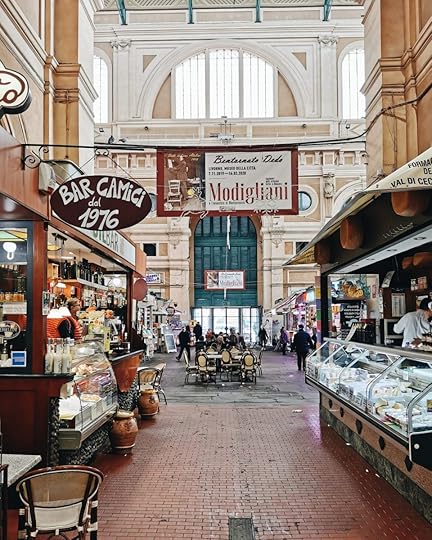
Visit during the winter
No longer is October “quiet season” — even before but especially since covid, October has proven to be one of the busy periods of the year. Come in November for the real start of autumn, the first chestnuts, the new olive oil and white truffles from San Miniato. Come in December (probably my favourite time to be in Florence) for the twinkly Christmas lights and festive atmosphere. In January and February you can just walk into museums in Florence and you have the place to yourself, not to mention all the carnival treats like schiacciata fiorentina and frittelle di riso (fried rice fritters).
Whatever you do, just come before Easter, whenever Easter happens to be, because from that moment until November, there is utter chaos in Florence and it is significantly more expensive. And if you don’t want to melt in the exhausting, excruciating extreme summer heat, avoid at all costs July-August, when it is easily 40°C (104°F). This is also the time of year we see more extreme weather (I just spent 48 hours in London’s Gatwick airport, 7 of them stuck inside a plane sitting on the tarmac, after two flights to Italy were cancelled for severe thunderstorms and hail the size of tennis balls) and it is an unpleasantly busy and crowded time in travel hubs, not to mention expensive. There are so many good reasons to avoid travel this time of the year if you can help it. See here for some more tips and images I shared on Instagram.
Don’t stay in Airbnbs
I know, everyone wants to just book an airbnb. But try to avoid it in cities like Florence and Venice, where this is causing a housing crisis and pricing residents out of their own city (here is a recent Guardian article if you want to read more about some of the devastating effects of Airbnb in Florence). Book a hotel. Airbnbs are not cheaper, they have actually driven the prices of hotels up and Florence is really expensive now thanks to Airbnb. You can easily spend 250 euro a night on a really terribly average, ordinary Airbnb in the height of summer. For something unique and in a great location try Soprarno, or one of its sister hotels, or Numeroventi (they do artist residences too). If you want to spend less, base yourself outside of Florence, perhaps even in an agriturismo (a farm stay). If you’re on a budget, look outside the city or why not try something like a monastery stay? My first stay in Florence when I moved here in 2001 was in a convent! It felt safer and was much cheaper even than a hostel. In San Miniato you can stay in a beautifully restored Seminary for 50 euro a night. See some more suggestions on favourite stays here.
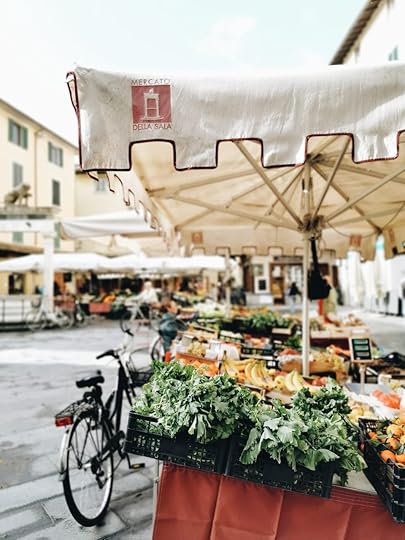
Just Wander
Remember those days when we didn’t have smart phones, GPS and social media? And maybe we had a guide book, but we mostly explored by wandering, with our heads up and looking around? I don’t want to be too nostalgic about it, I know that times change and mostly a lot of people travel through social media now but perhaps there is still a way to try to “get lost” and wander and not plan everything, just find things by simply coming across them. Maybe it would be fun to travel without a smartphone, put it away in your bag, don’t take photos of everything and just see where you get to? This is definitely the best way to travel in Japan, for example — I had someone recently ask me for tips (this is a tiny guide of some addresses I love around Ginza, Tokyo) but after a lifetime of traveling in Japan, I can tell you every corner is full of gems and the best way to explore is just going and exploring, you don’t need a guide book or social media. I would say the same for Venice, as long as you literally get yourself off the beaten track (like here).
Share your trip (or these tips!) responsibly with others
Don’t be one of those influencers who tells people to get delivery to the Airbnb of an overcrowded, overhyped, crowded, place that has destroyed a neighbourhood and that you can eat at in Las Vegas, not just Florence. Instead, tell them about the quiet, out of the way places you discovered on your trip that you can only find here, the places that are unique, that were special. How much better is a story that goes, “I just stumbled across this wonderful place…” than “I went to that place on TikTok….”
What other suggestions can you add?
See also My favourite eats in Florence (this is a piece I wrote in 2023 and originally had a paywall, I’m unlocking it now so that this can be shared).

The post How to eat and travel more sustainably in Florence first appeared on Emiko Davies.
January 11, 2024
Workshops at Enoteca Marilu
Update May 2024: 2024 workshops are sold out but 2025 have just been released. Shortly the dates for the 2025 Venetian Lagoon workshop and the Sicilian Spring Harvest workshop will be available too! Stay tuned on my newsletter for the latest workshop offerings.
Culinary workshops for 2025 at Enoteca Marilu, San Miniato:
Artichoke workshop 7-12 April
Midsummer workshop 23-27 June
Summer harvest workshop 7-12 July
Wine harvest workshop 8-13 September
Autumn workshop 13-17 October
White Truffle workshop 18-22 November
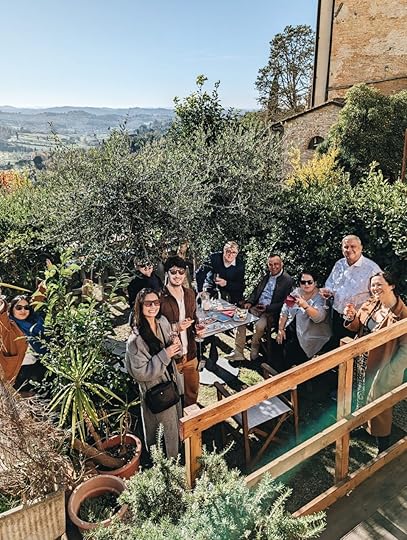
About the workshops
These are 5 day food and wine workshops based in our cooking school and wine bar in our lovely hilltop town, San Miniato. We will cook together, eat and drink wine, hunt for truffles, visit and get to know many local producers, and more. As each workshop is highly seasonal and super local, no workshop is ever the same (we have a lot of repeat guests too, who like to visit in different seasons so they can see something different each time), but we are lucky that in San Miniato there are different varieties of truffles available every season so we always plan a truffle hunt! We meet every morning around 9 or 10am and spend the day cooking or visiting very local producers, farmers and artisans, or learning about wine and, of course, enjoying all the food and wine. From the late afternoon, there is time to rest and you’re free to do as you like in the evenings (perhaps eat at one of the restaurants in town).
To keep these workshops intimate, we have a maximum number of 8 guests at a time. We really believe in small producers, artisan producers, people who care about the land and what they do and organic farming, so, as many of the ingredients as we possibly can reflect this, as well as all the wine we offer and also all the people we meet and visit will have a similar mindset too. If this is something you value too, you are in the right place.
The workshop that is a little different from the others is the White Truffle workshop as it involves a visit to the White Truffle Festival, which is held every November in San Miniato and which is one of the best times to visit San Miniato and see the town come alive with gourmet offerings — you can read more about it here.

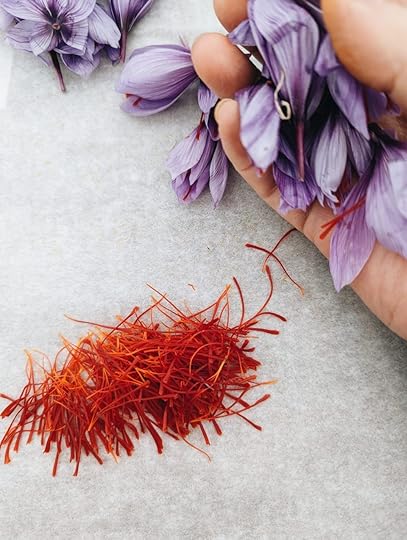
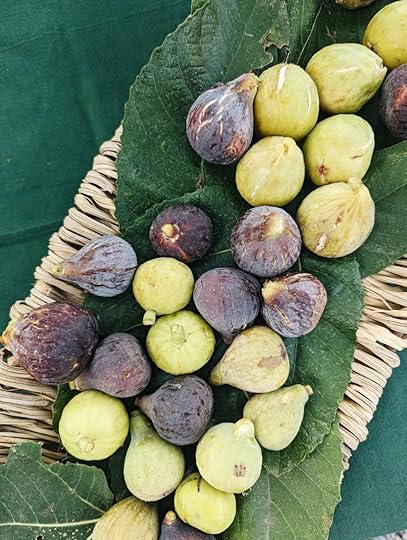
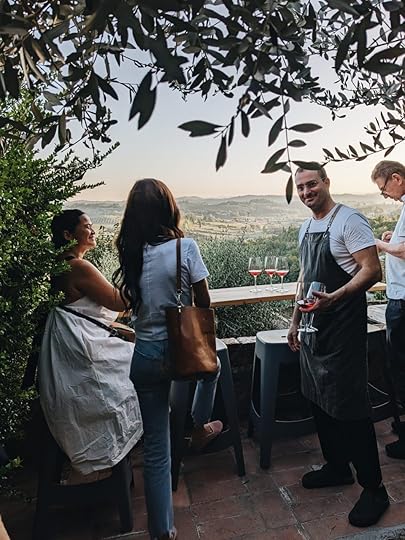

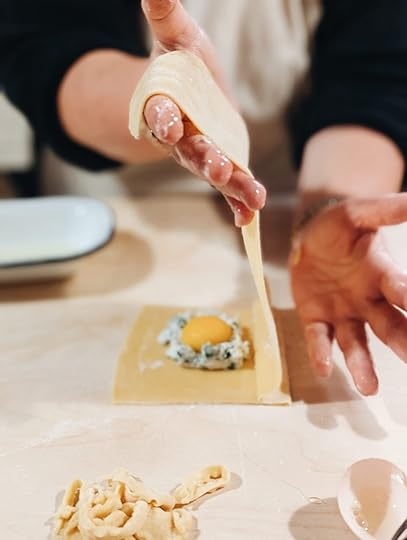
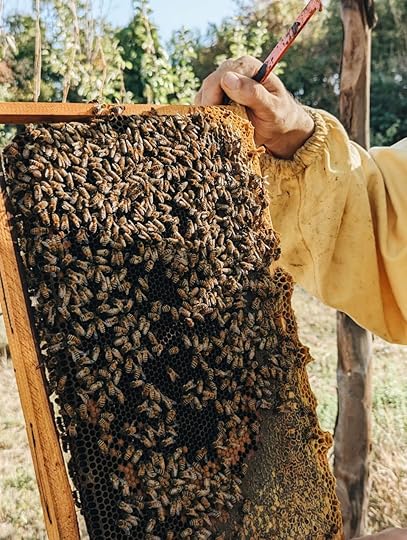
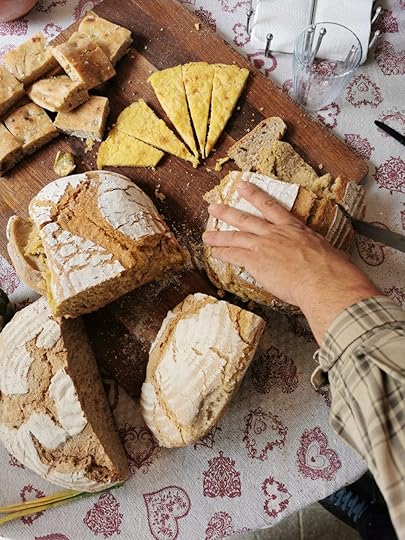
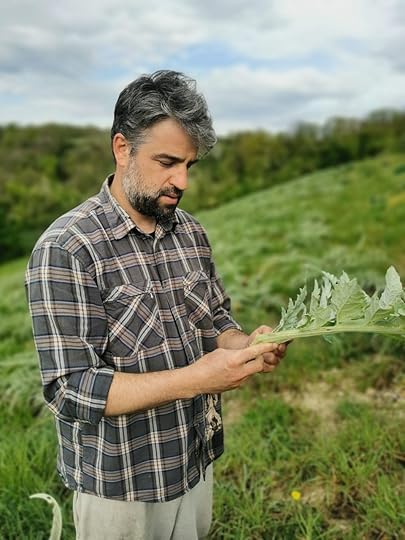
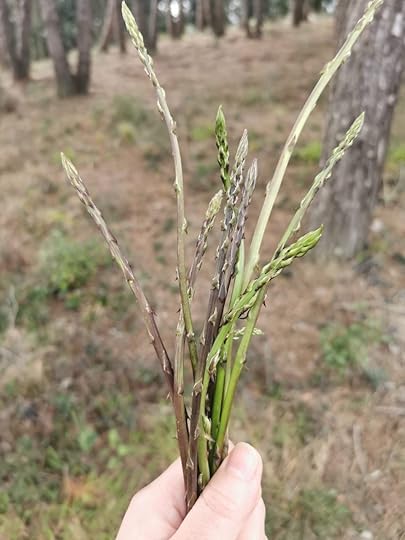
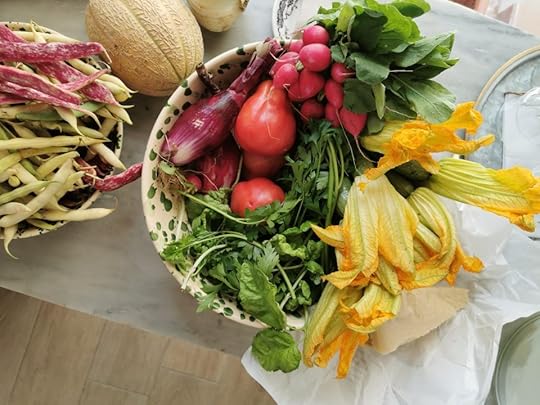
What is included:
Hands on cooking classes with award winning cookbook author Emiko DaviesWine lesson and a wine pairing with sommelier Marco LamiTruffle hunt in the woods, including truffles which we will prepare for lunchVisit to a biodynamic winery on a 15th century estate and wine tastingTour of San Miniato and tastes around town — coffee, pastries, salumi and more!Visits of local farmers, producers, butchers and other artisansLunch every day, including one out at our favourite trattoria in the countrysideAn exclusive welcome dinner at Enoteca MariluTransport included for all the visits during the workshop (arrival to and from San Miniato itself is excluded)Delicious natural wine and organic ingredients during mealsA tasty goodie bag of San Miniato productsCost: 1800 euro per person
Here, you can find all the details about what is included in the pricing, a sample itinerary, our cancellation policy, accommodation suggestions and more.
About San Miniato
San Miniato is a pretty, medieval hilltop town situated exactly halfway between Florence and Pisa (35 km away from both). Like many Tuscan towns on a hill, it has a history that can be traced to the Etruscans but a lot of what you see in the town goes back to the High Middle Ages — the city walls and the tower that overlook the Tuscan countryside all date to the 1200s. The beauty of San Miniato is that there is a view from almost every angle and you’ll catch many glimpses of the countryside and rolling hills covered with vineyards, olive groves, cypress and citrus trees. Today San Miniato is best known for its rare and precious white truffles — you only find these in a handful of places in the entire world — and for the festival that celebrates them every November.
San Miniato can be reached by regional train directly from Florence and Pisa too (about 40 minutes train ride). There are a variety of different places to stay in and around San Miniato for all different budgets — see here for some ideas based on reports from our guests and friends. If you’re on your way to explore more from San Miniato, see my post here on other places easily reached (the coast for example, or other important Tuscan towns).
Are you keen to join us? Get in touch at vino[@]enotecamarilu.com or see Enoteca Marilu!
The post Workshops at Enoteca Marilu first appeared on Emiko Davies.
Workshops for 2024 at Enoteca Marilu
Culinary workshops for 2024 at Enoteca Marilu!
Spring workshop, April 8-12 (now sold out)
Early summer workshop, June 3-7 (1 spot left)
Summer workshop, July 1-5
Autumn harvest workshop, September 23-27
Autumn workshop, October 14-18
White truffle workshop, November 12-16

About the workshops
These are 5 day food and wine workshops based in our cooking school and wine bar in our lovely hilltop town, San Miniato. We will cook together, eat and drink wine, hunt for truffles, visit and get to know many local producers, and more. As each workshop is highly seasonal and super local, no workshop is ever the same (we have a lot of repeat guests too, who like to visit in different seasons so they can see something different each time), but we are lucky that in San Miniato there are different varieties of truffles available every season so we always plan a truffle hunt! We meet every morning around 9 or 10am and spend the day cooking or visiting very local producers, farmers and artisans, or learning about wine and, of course, enjoying all the food and wine. From the late afternoon, there is time to rest and you’re free to do as you like in the evenings (perhaps eat at one of the restaurants in town).
To keep these workshops intimate, we have a maximum number of 8 guests at a time. We really believe in small producers, artisan producers, people who care about the land and what they do and organic farming, so, as many of the ingredients as we possibly can reflect this, as well as all the wine we offer and also all the people we meet and visit will have a similar mindset too. If this is something you value too, you are in the right place.
The workshop that is a little different from the others is the White Truffle workshop as it involves a visit to the White Truffle Festival, which is held every November in San Miniato and which is one of the best times to visit San Miniato and see the town come alive with gourmet offerings — you can read more about it here.











What is included
Three hands on cooking classes with award winning cookbook author Emiko Davies
Wine lesson and a wine pairing with sommelier Marco Lami
Truffle hunt in the woods with a truffle hunter and his dog, including truffles which we will prepare for lunch
Visit to a biodynamic winery on a 15th century estate with a Tuscan lunch and tasting
Tour of San Miniato and tastes around town — coffee, pastries, salumi and more
Visits of local farmers, producers, butcher and other artisans
Lunch every day, including one out at our favourite trattoria in the countryside
An exclusive welcome dinner at Enoteca Marilu
Transport included for all the visits during the workshop (arrival to and from San Miniato itself is excluded)
Delicious natural wine and organic ingredients during meals
A tasty goodie bag of San Miniato products
Cost: 1,600 euro per person (1800 euro for the October and November workshops, which will involve plenty of white truffles)
Here, you can find all the details about what is included in the pricing, a sample itinerary, our cancellation policy and more.
About San Miniato
San Miniato is a pretty, medieval hilltop town situated exactly halfway between Florence and Pisa (35 km away from both). Like many Tuscan towns on a hill, it has a history that can be traced to the Etruscans but a lot of what you see in the town goes back to the High Middle Ages — the city walls and the tower that overlook the Tuscan countryside all date to the 1200s. The beauty of San Miniato is that there is a view from almost every angle and you’ll catch many glimpses of the countryside and rolling hills covered with vineyards, olive groves, cypress and citrus trees. Today San Miniato is best known for its rare and precious white truffles — you only find these in a handful of places in the entire world — and for the festival that celebrates them every November.
San Miniato can be reached by regional train directly from Florence and Pisa too (about 40 minutes train ride). There are a variety of different places to stay in and around San Miniato for all different budgets — see here for some ideas based on reports from our guests and friends. If you’re on your way to explore more from San Miniato, see my post here on other places easily reached (the coast for example, or other important Tuscan towns).
Are you keen to join us? Get in touch via Enoteca Marilu!
The post Workshops for 2024 at Enoteca Marilu first appeared on Emiko Davies.
January 7, 2024
Market Day Cooking Classes at Enoteca Marilu
At Easter 2023, my husband Marco and I finally opened our own cooking school and enoteca, Enoteca Marilu. It’s a small, cosy space in an ex-stable in a hidden laneway of our town, San Miniato.
We waited for 19 months of restoration and paperwork (and even a crowdfunding campaign in the middle of it all to help give us a little extra push) before we could open the space and welcome our first guests and our first year was a great success, with almost completely booked out classes!
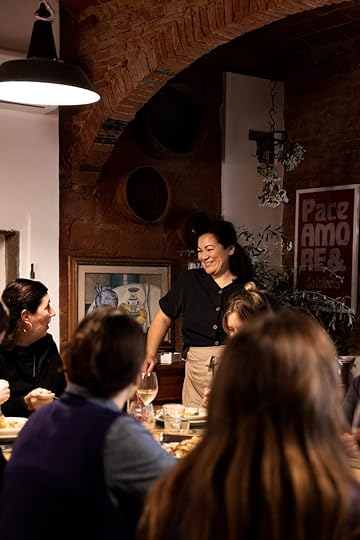
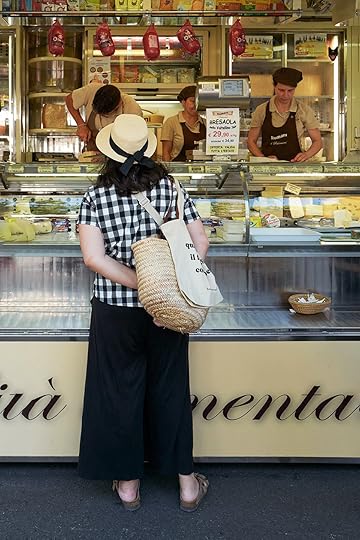
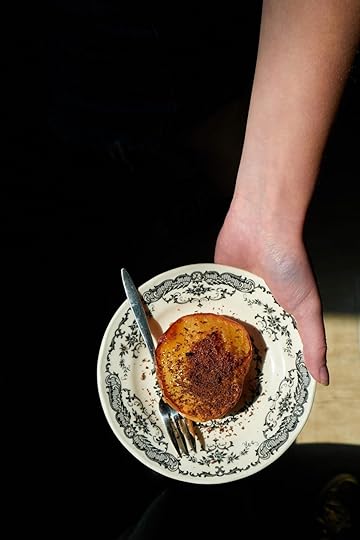

We had such a busy year I didn’t have time to write much about them so I thought I’d introduce it now to give you an idea of what it is that we do. I wanted to create something that I hadn’t seen before in Tuscany, first of all. I wanted it to be intimate (we have maximum of 8 people in our small kitchen) and I wanted it to be a way for people to experience some of the things I love most about living in Tuscany for the past 18 years: visiting the market, buying fresh, seasonal produce and cooking with friends before sitting down to a long, relaxed lunch with great wine, good conversation and a meal that we cooked together. So that’s basically what we do!
We meet at 10:15am (this seems rather precise but it’s to give people time to get here from the train station as many come in from nearby Florence for the day for it) in a corner of the gardens near the market. Depending on the time of year, there’s a small bar there called Lo Chalet where we can have a coffee while we wait for everyone to arrive. Then we go to the market — it’s small but really has everything you could ever need. Going to the market means not being in a rush to do your shopping! We spend the time it takes to wait our turn, talk to the growers, pick out the best produce for our recipes that day — I never cook the same menu twice so this changes literally every week according to the seasons!
And then we walk to the enoteca with a short stop along the way to pick up one last thing for the antipasto platter.
In the enoteca, we get ready for cooking together. The menu is almost always mostly vegetarian because I want to show you the best produce that we have and let the vegetables shine!
We cook con calma, the food takes the time it takes to cook. We cook together, all hands in. We chat and hopefully you learn many good tips along the way. We have a glass of wine while we put the finishing touches together on our lunch and then we finally get to sit down to a late lunch and enjoy it all together.

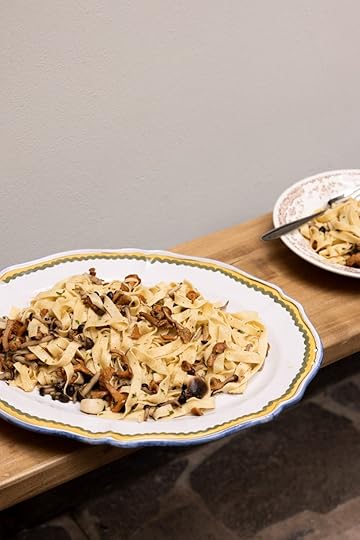

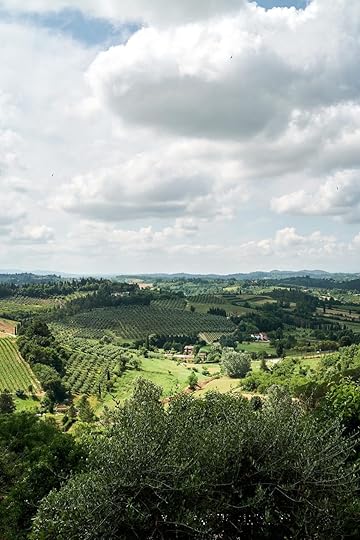
Does this sound like something you’d love?
We hold our market classes every Tuesday. You can check out or calendar and book right away on our Enoteca Marilu website.
Here’s more about us written up in The Financial Times.
Photographs here were by a market class guests and photographer, Kelsey Zafiridis and Jules Wilson-Haines
The post Market Day Cooking Classes at Enoteca Marilu first appeared on Emiko Davies.
Emiko Davies's Blog
- Emiko Davies's profile
- 13 followers



